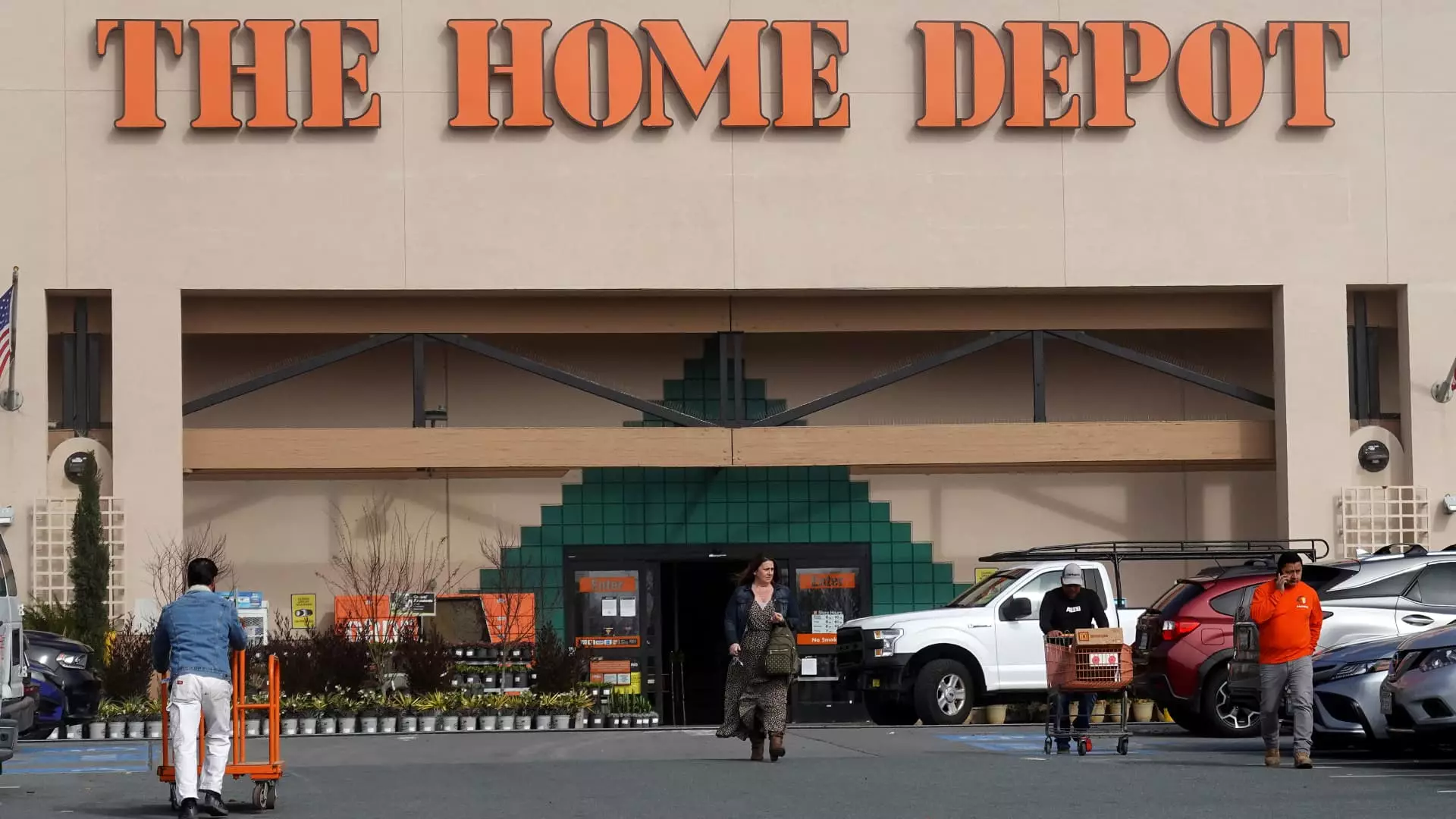As the warm weather beckons and outdoor life resurfaces, major home improvement retailers find themselves in an exhilarating race to capture consumer spending. Among them, Home Depot stands out with its ambitious Memorial Day outdoor sales event running until May 28. For many, including investment mavens like Jim Cramer, these next few weeks symbolize an almost ‘Christmas-like’ peak in consumer demand for home and garden products. This invigorating spirit is not just about retail sales; it’s a calculated strategy to drive foot traffic, marking a fourteen-day frenzy of promotions on everything from plants to essential outdoor furniture, thereby enhancing their bottom line as the fiscal year unfolds.
The appeal of gardening—now firmly entrenched in the American zeitgeist—represents more than just habit; it’s a lucrative venture for Home Depot. The company’s indoor and outdoor garden sectors amassed a remarkable $20.83 billion in fiscal year 2024, indicating a modest growth of 1.29% from 2023. This translates to approximately 13% of Home Depot’s overall sales — a foundation that showcases their adeptness in thriving within this vital segment. What remains troubling, however, is that even with such promising data, the initial quarter is often a mire of challenges, which gives a more sober context to the perennial optimism surrounding the gardening season.
Market Realities: The Tug of War
Yet, the robust sales projections and seasonal optimism don’t come without their caveats. The looming tariffs and the still-elevated mortgage rates may throw wrenches into the plans for continuing growth in sales. Investors are understandably skittish, waiting to parse the first-quarter earnings report as Home Depot gears up for its anticipated challenges. The consensus remains cautious with expectations set at $39.3 billion, an 8% uptick—if its forecasts hold true—while EPS sits at $3.59, suggesting a slight decline. The business community’s undercurrent of anxiety speaks volumes about the fragility of the current economic climate and its potential impacts.
Moreover, outdoor sales, while key for seasonal spikes, are inherently affected by environmental consistency. Bernstein’s analysts have warned that unfavorable weather and shifting consumer sentiment could further complicate outcomes, leading to an uphill battle for retailers. In a climate where discretionary spending can swing dramatically based on external factors, the question remains: How resilient will Home Depot’s strategies prove to be?
Hope on the Horizon: Signs of Recovery
Amidst these struggles, a flicker of hope can still illuminate Home Depot’s outlook. Recent reports about increased demand for large-scale projects from contractors serve as an optimistic beacon for the latter half of 2024. A survey from Morgan Stanley indicates that craftsmen are witnessing a renaissance of interest in substantial home improvements, ideal for Home Depot’s offerings. Could it be that the construction and home renovation sector is just biding its time, waiting for the right moment to surge?
Another encouraging sign is the impending Federal Reserve rate cuts expected later in the year, which could finally incentivize the housing market. Jim Cramer suggests that a mortgage rate decrease below 6.5% is what this faltering market desperately needs to revitalize buyer interest. The complexities of this market situation are profound; should the Fed’s anticipated moves play out positively, we could see a resurgence not only in market buoyancy but also in robust sales for Home Depot.
A Cautious Optimism: The Stock Perspective
Despite initial hesitations, many analysts retain an affirmative stance on the company’s potential resilience. Much of the Home Depot stock’s trajectory hinges on housing turnover, intertwined with overarching economic indicators. Home Depot stock has endured a slight drop of approximately 2.5% YTD, yet its performance against the backdrop of an almost stagnant S&P 500, which barely gained 1%, is an intriguing observation.
It illustrates a broader narrative within the stock market: while Home Depot might be facing its share of headwinds, those hurdles may ultimately allow for a more robust recovery. Optimism doesn’t mean blindly ignoring the storm; rather, it consists of understanding both the risks and opportunities that lie ahead. In a world where consumer confidence fluctuates, the adaptability and strategic foresight offered by Home Depot hold the potential for significant returns.
In essence, as the gardening season kicks in and consumer enthusiasm is rekindled, Home Depot remains a compelling option for investors. The question isn’t just whether it can weather the storm but how strategically it can leverage the outdoor market to emerge stronger and more resilient.

